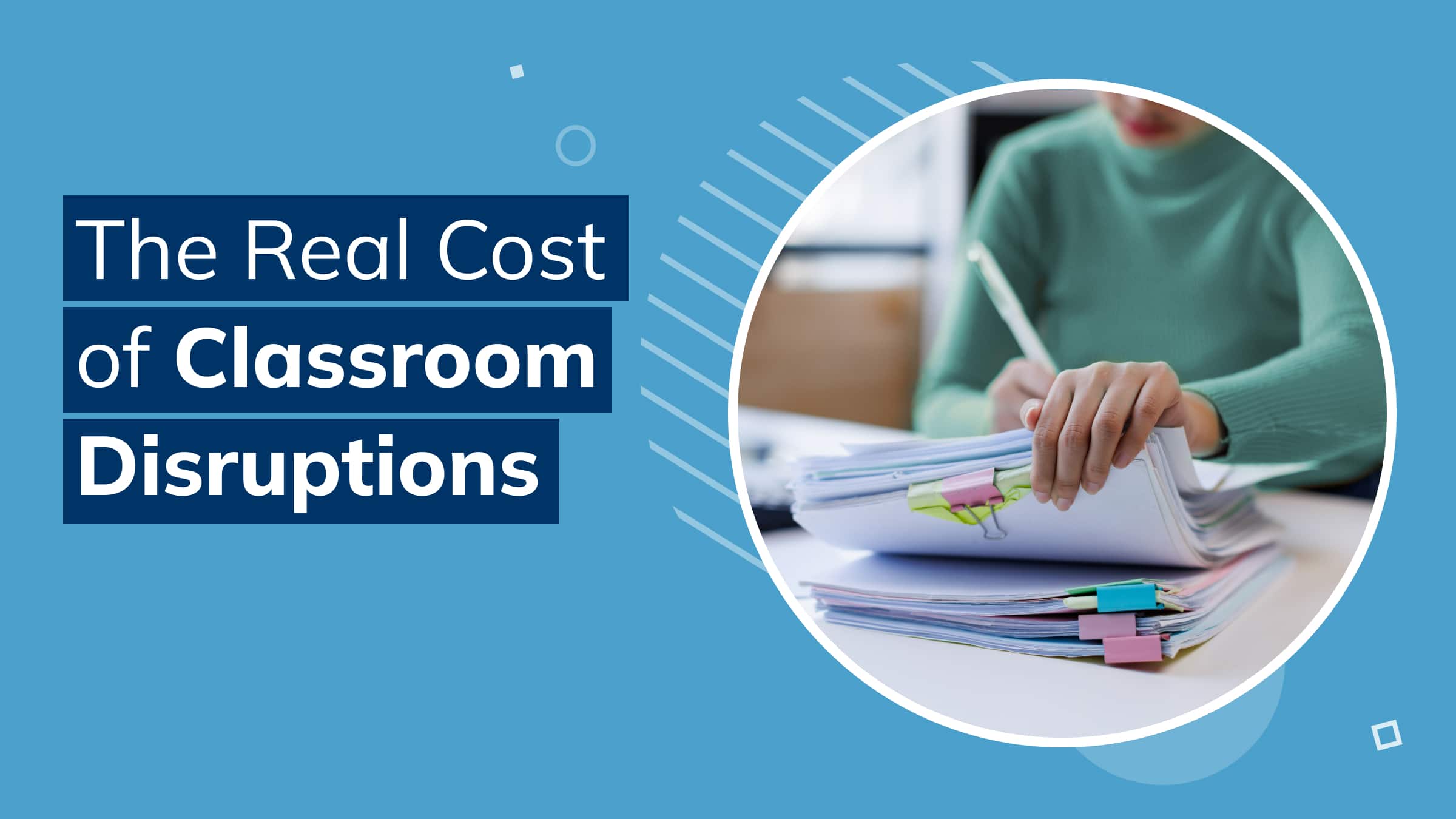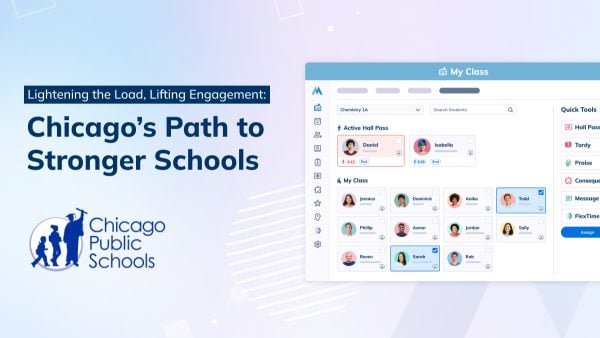A missed hallway check-in. A behavior flag that goes unlogged. A teacher so buried in tabs that an early warning is missed.
These aren’t just workflow glitches. They’re lost learning and instruction moments – and they add up fast.
In the first post in this 3-part series, we talked about edtech tool overload, and acknowledging that teachers are overwhelmed with fractured systems.
If we pull that thread further, what happens when those fractured systems lead to distractions, and – ultimately – impact the very outcomes that teachers are there to empower?
When behavior signals go unseen, when interventions are delayed, when attention gets split across five tabs instead of five students—there’s a real cost. And it’s one we can’t afford to ignore.
Classroom Disruption is a Systems Problem
It’s estimated that teachers lose 10 to 20 days of instructional time each year to classroom disruptions. And it’s not because they’re unfocused or unprepared—it’s because the very tools meant to support them have become part of the problem.
When behavior management lives in one app, hall passes in another, and communication logs in a third, teachers are forced to spend time toggling between platforms instead of responding in the moment. Even logging an incident can take more steps than the incident itself. And when follow-up falls through the cracks—or arrives too late—students miss the chance for timely redirection, and disruptions ripple outward.
Nearly half of educators say juggling multiple digital tools is one of their top classroom challenges. And the more scattered the system, the more likely it is that warning signs get missed entirely—until they escalate into missed instruction, disengagement, or even chronic absenteeism.

We were initially looking for a hall pass and tardy pass system, so we went and saw how Allen High was using Minga. I got a lot of good information from them and one thing I loved about Minga was it was an all-in-one system. We have about 20 different software solutions that we’re using, so this was one of the best parts.
Chris Bryant
Associate Principal of Maintenance & Operations
Midland Legacy High School
The Ripple Effect
It starts with something small.
A student shows up late to class. A second skips the hallway check-in. A third calls out during instruction—not with malice, just momentum.
Each of these moments might seem isolated, minor, even forgettable. But if the systems teachers rely on are fragmented, confusing, or too clunky to act in the moment, that one tardy—or that one behavior flag that never gets logged—can quietly slip through the cracks.
And that’s where the real disruption begins.
Because when just one signal goes untracked, it’s easier for the next one to be missed, too.
That same student shows up late again tomorrow. No pattern flagged. No intervention triggered. No one looped in.
By the time it becomes a habit, it’s harder to change—and harder for the student to re-engage. Multiply that by a handful of students, across a full schedule, and the impact grows fast.
The burden of all this often falls on teachers—who are left to manage behavior reactively, without the tools or visibility to get ahead of it. And when classrooms operate in constant response mode, everyone loses instruction time. Focus erodes. Culture suffers. Students who don’t disrupt still get disrupted.
This isn’t about teacher accountability. It’s about system design.
Because the truth is: educators are paying attention. But their tools aren’t working with them.
And when that’s the case, students—especially the ones who need consistency most—are the ones who suffer.
What the Reasearch Says

What Schools Can Do Differently
If the data points above are any indication, teachers aren’t lacking tools—they’re overwhelmed by them. And even the tools they do have are often more complicated than they need to be.
That’s why simplification is key. Simplification in tools. Simplification in process. Simplification in experience.
This is how we set teachers up for success.
When behavior tools are clear, fast, and all in one place, teachers can take action in the moment—not after class, not at the end of the day, and not across five different systems.
That’s what My Class was built to do:
One tab, not twelve.
One workflow, not five.
One place to support student behavior, connection, and consistency—in three clicks or less.
Because when teachers are equipped to respond—not react—students don’t just behave better.
They stay present. They stay learning. And the whole classroom moves forward.

What’ Next?
In the final post in this series, we’ll look at what happens when teachers reclaim time, clarity, and control—with fewer systems and more support.
In the meantime, let’s chat about how My Class can reduce the cost of tech fragmentation in your school.




